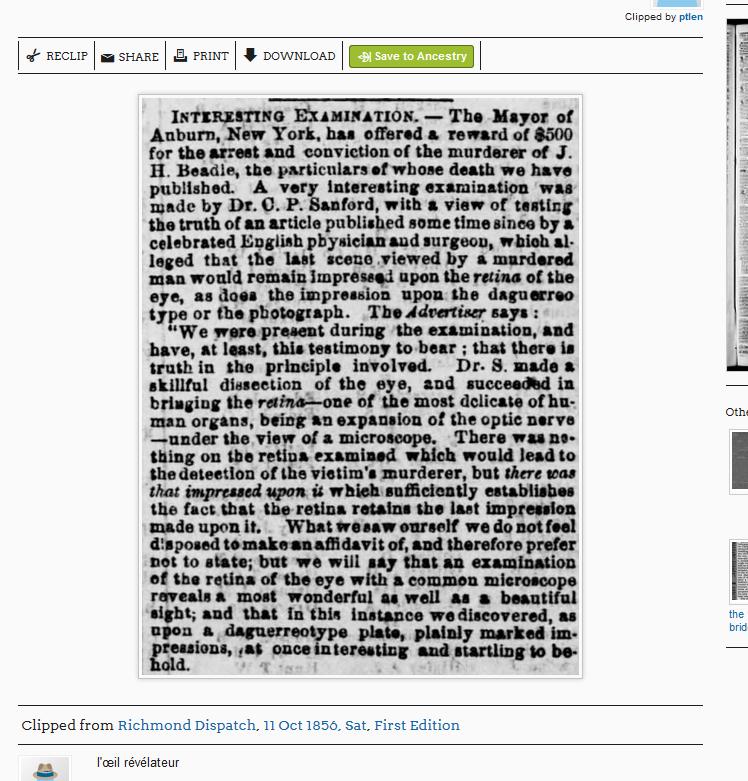Earliest Optography? September 16, 2016
Author: Beach Combing | in : Modern , trackback
Two ideas interested late nineteenth-century crime fiction writers. First, the ridiculous notion that finger prints were unique and that they could be recorded to incriminate this or that thief or murderer; and, second, optography, the sensible-sounding proposition that a murder victim would record the last thing he or she saw on the eye’s retina. Take the following example from 1863:
An English photographer, Mr. Warner, lately took a photograph of the eye of an ox a few hours after death; and on examining the impression through the microscope distinctly perceived depicted on the retina the exact delineation of the stones with which the slaughter-house was paved, being the last object which affected the vision of the animal on bending down its head to receive the fatal blow. The consequence deduced from this very apocryphal story is, that if the eyes of a murdered man be photographed a few hours after death the likeness of the murderer will be found on his retina that being the last object he can have seen during the death struggle.
Optography proved to interest the scientists and police in the late nineteenth-century. Certainly, one and possibly two of Jack the Ripper’s victims had their retinas closely examined. The idea also appeared in fiction including in Jules Verne in 1902: Beach has a memory of a Sherlock Holmes short story but cannot, this morning, find it…. However, what is interesting about the passage above is the date. It was taken from Meath People, 5 Sep 1863, 2. This seems to be the earliest reference to optography? Was it ‘Mr. Warner’, then, who pioneered this fascinating dead end? Drbeachcombing AT yahoo DOT com Or were there others who went before?
A clear limitation is the development of the camera. A photograph needs to be taken of the dead retina… The camera also presumably inspired the idea of death snap shots, or were their death sketches before (some renaissance bodies come to mind)?
The great Filip G writes in, 29 Sep 2016 with an earlier (the earliest??) example:



